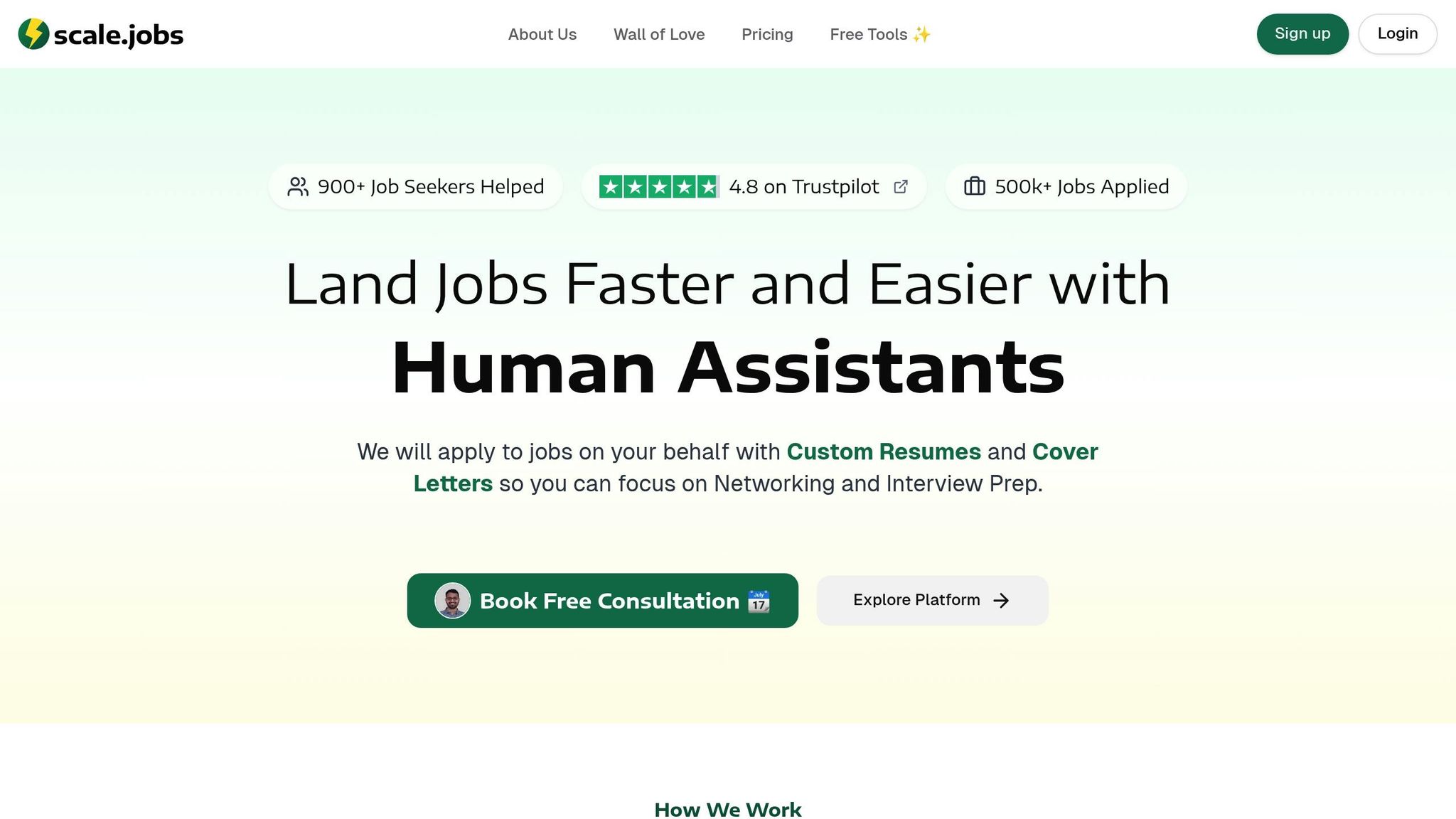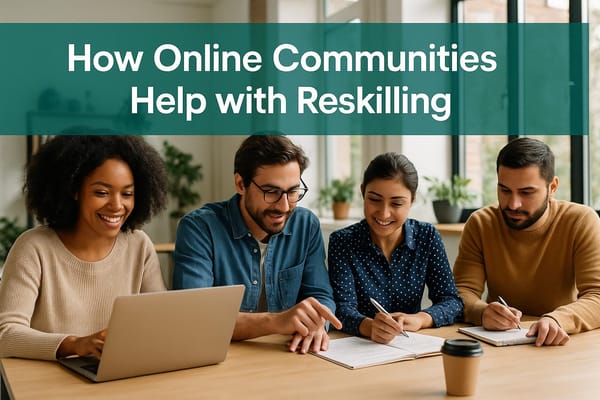Balancing Personal and Professional Content on LinkedIn
Learn how to effectively balance personal and professional content on LinkedIn to enhance credibility and build connections.

Want to grow your LinkedIn presence? Start by balancing personal and professional content. Here's how:
- 80/20 Rule: Share 80% professional posts (industry insights, career milestones) and 20% personal stories (hobbies, lessons learned).
- Key Themes: Focus on 3-4 topics like industry trends, leadership, or personal growth.
- Consistency: Post 2-3 times weekly, engage with comments daily, and track performance using LinkedIn analytics.
- Storytelling: Turn personal experiences into professional insights - connect hobbies or challenges to workplace skills.
This approach helps you stand out, build credibility, and foster connections - all while staying authentic.
A SIMPLE LinkedIn Content Strategy - Content IDEAS for ...
Creating Your LinkedIn Content Plan
A good content plan combines professional insights with personal stories to help you build a LinkedIn presence that supports your career goals. It works alongside your brand identity to ensure your message is clear and consistent.
Know Your Target Readers
Craft content that connects with the right audience while showcasing your expertise. Focus on these groups:
- Industry professionals: Share technical insights and lessons from your projects.
- Hiring managers: Highlight problem-solving skills and leadership experience.
- Potential mentors: Show your eagerness to grow and learn.
- Fellow professionals: Post relatable workplace stories.
Adjust your content to match your audience's needs. For instance, if you're a software developer, share technical posts about solving coding challenges. On the personal side, talk about your participation in hackathons or local tech events.
Pick Your Main Topics
Choose 3-4 key themes that align with your career goals and personal interests. Here are some ideas:
- Industry Trends: Share your take on market shifts, tech updates, or new developments.
- Career Development: Post about skills you're building, certifications, or learning experiences.
- Leadership: Talk about managing projects, building teams, or mentoring others.
- Innovation: Discuss new tools, methodologies, or side projects you're working on.
Balance these themes by blending professional insights with personal growth stories. For example, when talking about industry trends, include both data and your own experience applying those changes.
Set a Posting Schedule
On LinkedIn, consistency is more important than posting every day. Here's a suggested plan:
- Post 2-3 times per week.
- Spend 30-45 minutes crafting each post and aim to publish between 9-11 AM EST.
- Mix longer, detailed posts with shorter, quick insights.
- Set aside 15 minutes daily to engage with comments and messages.
To stay organized, batch your content. Use a few hours over the weekend to plan and draft your posts for the week. This approach helps you stay consistent and maintain a strong professional presence.
Creating Strong Professional Content
Your content plan sets the stage, but your professional posts need to showcase expertise and highlight accomplishments in a clear, engaging way.
Share Industry Knowledge
Your professional content should demonstrate your expertise and relevance. Focus on sharing insights that matter, such as:
- Technical advice: Offer practical solutions with clear, actionable examples.
- Industry trends: Explain how emerging trends affect real-world scenarios.
- Proven methods: Share approaches that have delivered results.
Keep your content detailed yet easy to understand by using relatable examples and real-world applications.
Share Work Achievements
When discussing milestones, focus on the value behind your accomplishments. Use this structure to make your posts more impactful:
- Context: Briefly describe the situation and challenges.
- Actions: Highlight your specific contributions and approach.
- Results: Share measurable outcomes and key takeaways.
- Acknowledgments: Recognize teammates or mentors who supported you.
Rather than simply announcing a promotion, share the skills you’ve developed, challenges you’ve overcome, and the lessons learned along the way.
Join Industry Discussions
Participating in conversations helps establish your professional voice. Here’s how to engage effectively:
- Add thoughtful comments or ask meaningful questions.
- Share personal experiences that add value to the discussion.
- Relate the conversation to real-world examples.
- Respond promptly - ideally within 24 hours - to keep the dialogue active.
Focus on constructive, professional interactions that encourage learning and collaboration. Pro Tip: Quick responses in LinkedIn groups or comment threads not only keep the conversation alive but also show your dedication to meaningful engagement.
Adding Personal Content While Staying Professional
You can share personal insights while maintaining a professional tone. Here's how to strike that balance:
Connect Stories to Work Lessons
Turn personal experiences into professional insights by focusing on skills and lessons that apply to your work. When sharing personal stories:
- Set the stage: Start with a short anecdote that ties into a business lesson.
- Emphasize the takeaway: Clearly explain how the experience contributed to your professional growth.
- Stay relevant: Make sure the story aligns with your industry or role.
For instance, if you're a project manager who enjoys running marathons, you could share how training taught you about goal-setting, perseverance, and tracking progress - skills that directly relate to project management.
Your hobbies can also highlight qualities that make you stand out professionally.
Show Your Outside Interests
Hobbies can reveal strengths that apply to your career. For example:
- Volunteer roles: Showcase leadership or organizational skills.
- Creative activities: Highlight problem-solving and innovative thinking.
- Sports achievements: Reflect discipline and focus on goals.
- Learning new skills: Demonstrate curiosity and a commitment to growth.
Instead of just listing accomplishments, focus on the skills or qualities you've gained. For example, don’t just say you completed a coding bootcamp - talk about how it sharpened your analytical thinking or teamwork abilities.
These personal details can help you foster stronger professional connections.
Build Real Connections
Blending personal narratives with professional insights can create meaningful bonds. Share experiences that resonate with your audience, such as:
- Career lessons: Talk about transitions or strategies that have shaped your career.
- Ongoing learning: Share what you’re doing to grow professionally.
- Industry challenges: Offer insights or solutions to common issues in your field.
To maintain professionalism when sharing personal experiences:
- Set limits: Share insights without oversharing private details.
- Focus on solutions: Pair challenges with constructive takeaways.
- Be mindful of your audience: Keep your content relevant to a diverse group.
- Choose the right timing: Share during business hours for better engagement.
Managing Your Content Mix
Balancing professional and personal content is key to building a genuine presence while keeping your credibility intact. Here's how to handle your content mix effectively:
Follow the 80/20 Split
Stick to an 80/20 rule to maintain a career-oriented focus while adding a personal touch:
- Professional (80%): Share industry updates, career milestones, and work-related content.
- Personal (20%): Post personal stories, growth experiences, or hobbies that align with your professional journey.
For instance, if you post 10 times a month, aim for 8 professional posts and 2 personal ones. Here's an example of how this balance might look:
| Week | Professional Posts | Personal Posts | Examples |
|---|---|---|---|
| Week 1 | Industry news, Project milestone | Weekend volunteering | Share a client success story, then link your volunteer work to leadership skills |
| Week 2 | Team achievement, Skills development | Personal growth story | Highlight a team award, then explain how a hobby has impacted your work |
Track What Works
Use LinkedIn analytics to fine-tune your approach:
Metrics to Monitor:
- Engagement rate: Check likes, comments, and shares.
- Profile views: See if certain posts lead to more profile visits.
- Connection growth: Identify which posts attract new connections.
- Post reach: Compare how far different types of posts travel.
LinkedIn's analytics tools can also help you discover:
- Optimal posting times (weekdays, 9 AM - 2 PM EST are often best).
- The formats that get the most engagement.
- Topics that resonate with your audience.
Keep Standards High
Ensure all your content meets a professional standard:
Checklist for Quality Content:
- Relevance: Share posts that add value to your network.
- Accuracy: Double-check facts and figures before posting.
- Grammar: Proofread everything to avoid errors.
- Visuals: Use clear, high-quality images when needed.
- Tone: Keep your language professional, even in personal posts.
Conclusion: Next Steps for LinkedIn Success
Key Points Review
Let’s recap the essentials:
- Keep a balance of 80/20 between professional and personal posts.
- Focus on creating high-quality content to build trust.
- Use analytics to refine your content strategy.
- Share authentic experiences to establish credibility.
Now, it’s time to turn these insights into action.
Start Your Changes Today
Here’s how you can take immediate steps:
- Audit your recent posts to see how they align with the 80/20 balance.
- Plan a 30-day content calendar that incorporates both professional and personal topics.
- Set clear engagement goals and spend 30 minutes each week reviewing your post performance.
Scale.jobs Tools for Job Seekers

Looking to boost your LinkedIn presence while managing a job search? Scale.jobs simplifies the process with tools and services that save you time. Their virtual assistants apply to jobs on your behalf, so you can focus on networking and preparing for interviews.
"You should focus on what matters the most - Interview Prep - and let us handle the rest."
– Shubham Dhakle, Outcome Manager
Here’s what users have achieved with Scale.jobs:
| Metric | Details |
|---|---|
| Job Search Efficiency | 40% less time spent searching, leaving more room for networking and interview prep |
| Job Acquisition Success | 93% of users secured full-time roles within 3 months, with 47% crediting Scale.jobs for their success |
Scale.jobs also offers free tools to help professionals streamline their job search, including:
- Resume ATS Checker with actionable tips.
- Cover Letter Generator to craft tailored applications.
- Job Applications Tracker to stay organized.
- Portfolio Website Generator to showcase your work.
"Facing a layoff during a recession with only 60 days left on my H1B visa, I was in a critical situation... 4 weeks down the line, I secured three job offers, with a 75% salary increase compared to my previous position."
– Apoorv Singh, Consultant




